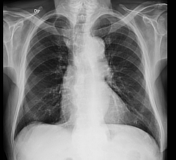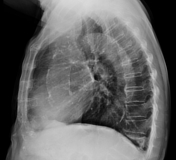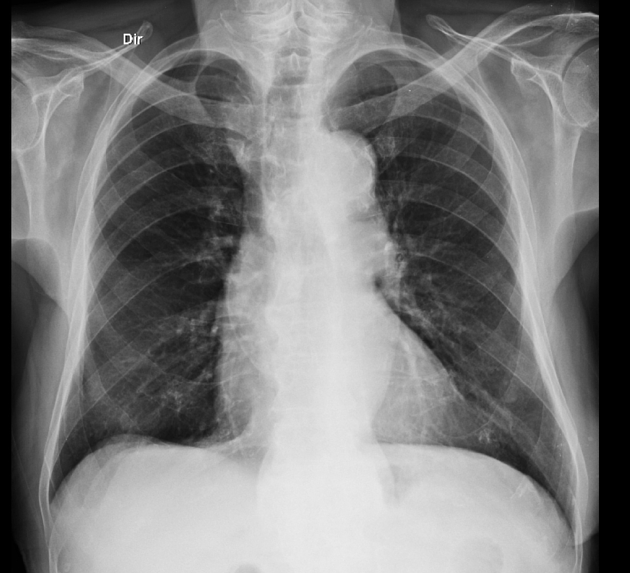Presentation
Asymptomatic patient. Pre-operative exam for extra-thoracic reasons.
Patient Data





There is a mild thoracic aorta ectasia, especially in the ascendant and aortic arch, observed as a prominent aortic knob (red circle on frontal x-ray). On the lateral view is possible to follow all the thoracic aortic (red lines) thanks to diffuse parietal atherosclerotic calcifications. The aorta has 3.8 cm in diameter.
Heart size is normal.
Lungs are clear.
Case Discussion
This "abnormal aortic silhouette" observed in these chest x-rays corresponds to a common finding observed in elderly patients: a diffuse senile ectasia of the thoracic aorta.
Ectasia is a term used to describe a vessel dilatation, however radiologists use this expression to describe the tortuosity of the thoracic aorta that often occurs in elderly patients. When the dilatation is significant and reaches the appropriate measurement criteria, the term aneurysm is utilized.




 Unable to process the form. Check for errors and try again.
Unable to process the form. Check for errors and try again.